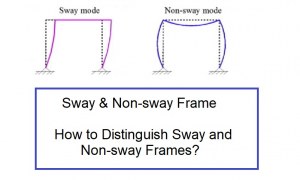🕑 Reading time: 1 minute
The unconfined compressive strength (qu) is the load per unit area at which the cylindrical specimen of a cohesive soil falls in compression.qu = P/A
Where P= axial load at failure, A= corrected area =Contents:
Determine Unconfined Compressive Strength of Cohesive Soil
Equipment for the Test
- Unconfined compression apparatus, proving ring type
- Proving ring, capacity 1 kN, accuracy 1N.
- Dial gauge, accuracy 0.01 mm.
- Weighing balance
- Oven
- Stop watch
- Sampling tube
- Split mould, 38mm diameter, 76mm long.
- Sample extractor
- Knife.
- Vernier calipers
- Large mould.
Procedure of Unconfined Compressive Strength Test
- Place the sampling soil specimen at the desired water content and density in the large mould.
- Push the sampling tube into the large mould and remove the sampling tube filled with the soil. For undisturbed samples, push the sampling tube into the clay sample.
- Saturate the soil sample in the sampling tube by a suitable method.
- Coat the split mould lightly with a thin layer of grease. Weigh the mould.
- Extrude the sample out of the sampling tube into the split mould, using the sample extractor and the knife.
- Trim the two ends of the specimen in the split mould. Weigh the mould with the specimen.
- Remove the specimen from the split mould by splitting the mould into two parts.
- Measure the length and diameter of the specimen with vernier calipers.
- Place the specimen on the bottom plate of the compression machine. Adjust the upper plate to make contact with the specimen.
- Adjust the dial gauge and the proving ring gauge to zero.
- Apply the compression load to cause an axial strain at the rate of ½ to 2% per minute.
- Record the dial gauge reading, and the proving ring reading every thirty seconds up to a strain of 6%. The reading may be taken after every 60 seconds for a strain between 6%, 12% and every 2minutes or so beyond 12%.
- Continue the test until failure surfaces have clearly developed or until an axial strain of 20% is reached.
- Measure the angle between the failure surface and the horizontal, if possible.
- Take the sample from the failure zone of the specimen for the water content determination.

Fig: Unconfined Compression Testing Machine (Spring Type)

Fig: Unconfined Compression Testing Machine (Proving Ring Type)
Data Sheet for Unconfined Compression Test
Initial length of the specimen Plot a curve between the compressive stress as ordinate, and axial strain as abscissa.
Plot a curve between the compressive stress as ordinate, and axial strain as abscissa.

Fig: Mohr’s Circle for Unconfined Compression Test
Results of the Test: From the plot, unconfined compressive strength,

